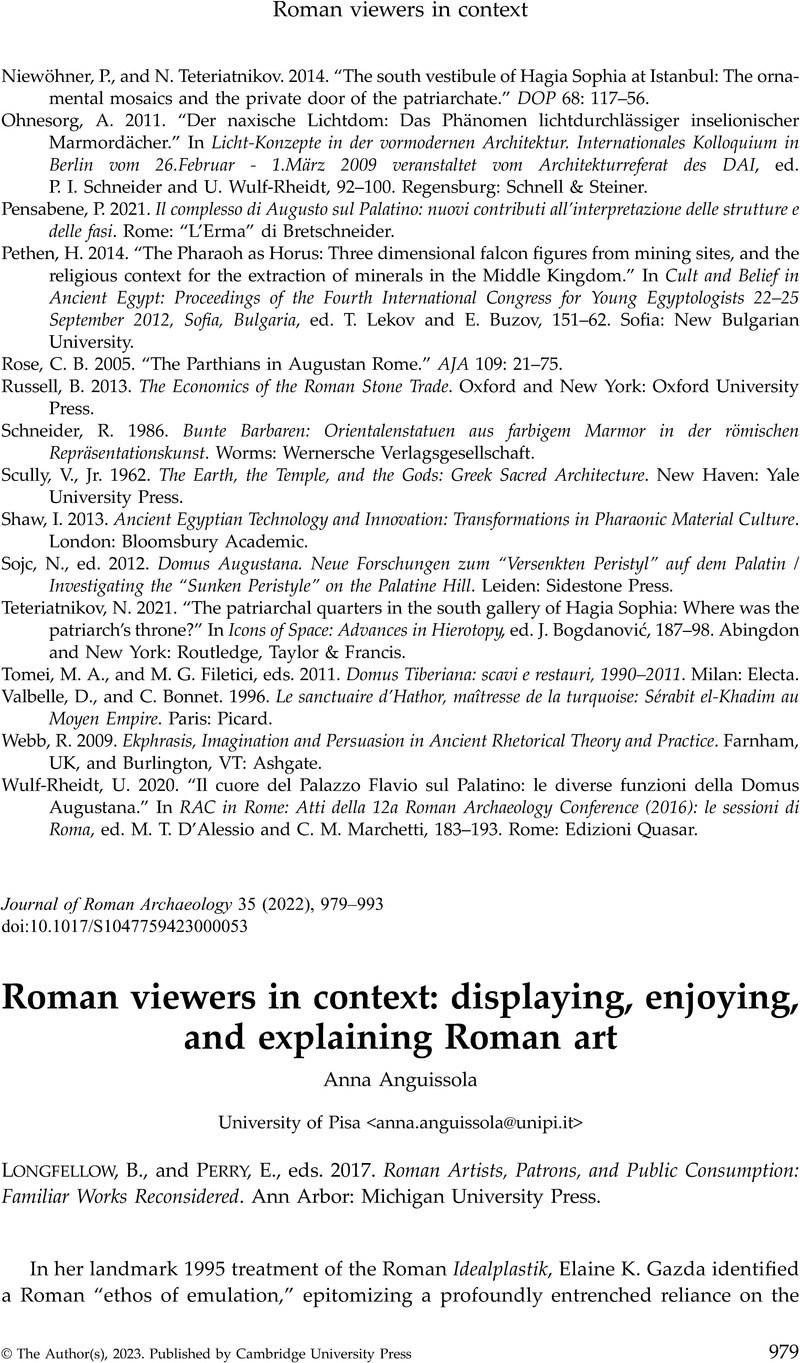Bartman, E. 2002. “
Eros's flame: Images of sexy boys in Roman ideal sculpture.” In
The Ancient Art of Emulation. Studies in Artistic Originality and Tradition from the Present to Classical Antiquity, ed.
Gazda, E. K.,
249–71. Supplements to the MAAR.
Ann Arbor:
University of Michigan Press.
Google Scholar 